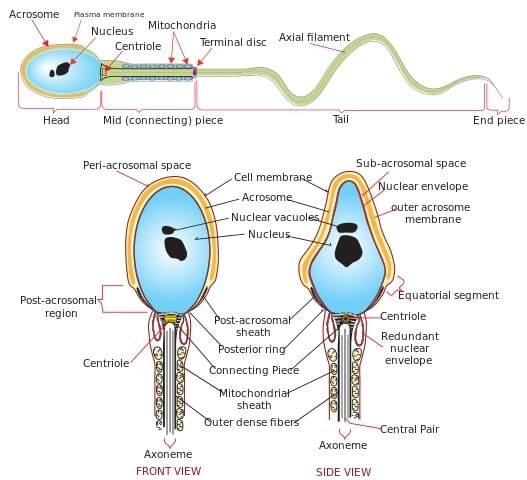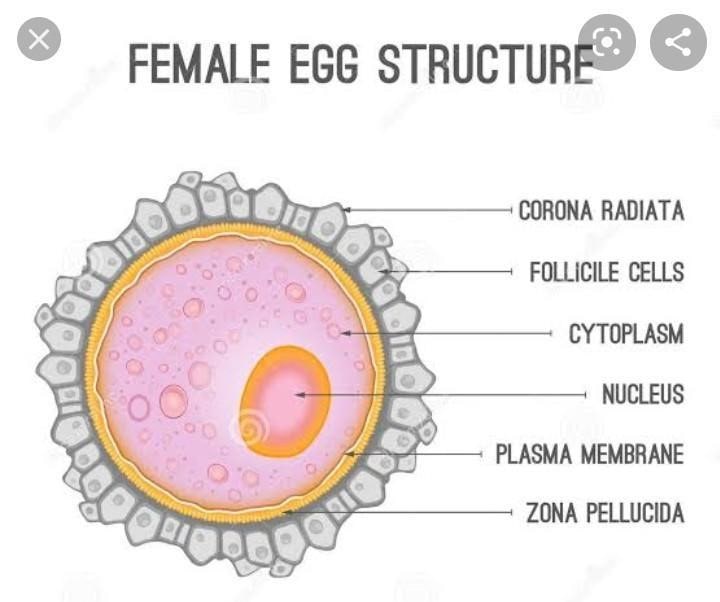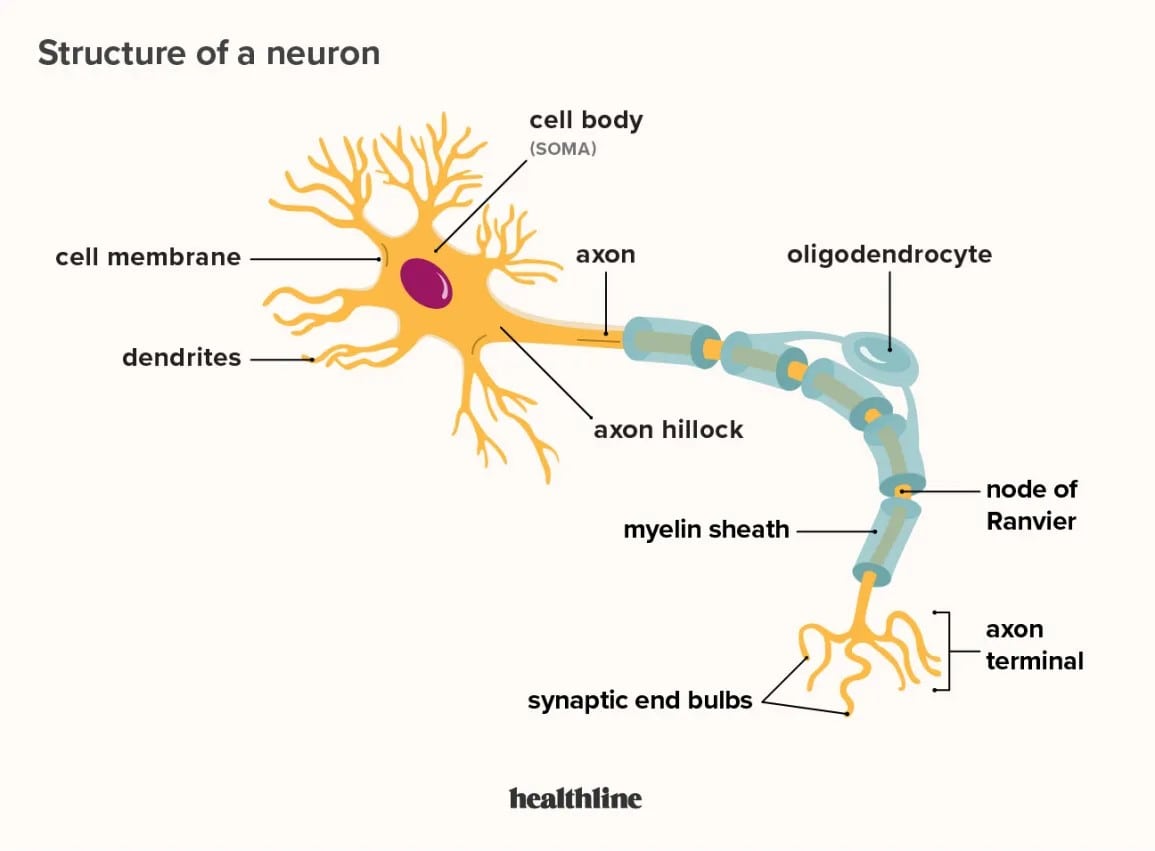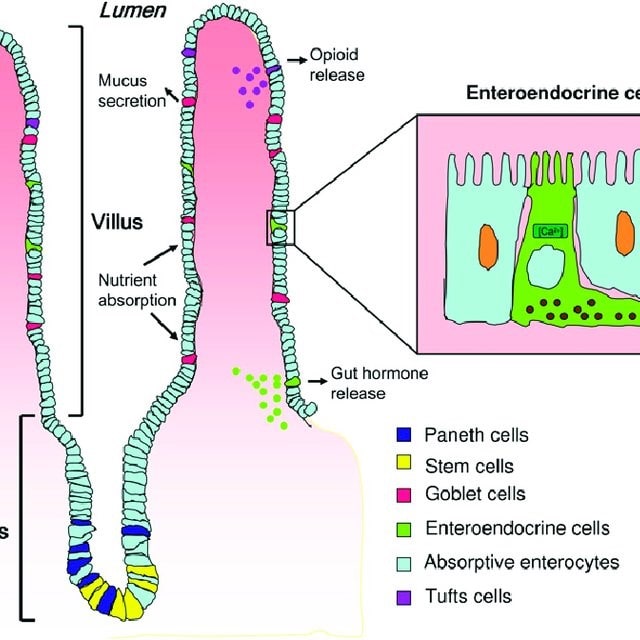Cellular Anatomy and Physiology of Organisms
Introduction: The Interconnected Nature of the Digestive System and its Role in Potential Viral Transmission
Task 1
Several organs work in the human body and are interconnected to each other for their function.in terms of biology, the division of labor refers to performing the different functions in the body as per the functions of multicellular organisms. The method of division of labor is the special function of the different cell organelles that work together to ensure the survival of the body by providing different roles in the body. The digestive system, cardiovascular as, and respiratory systems are interrelated to each other in the work process in the human body to increase the efficiency and longevity of the body. The cardiovascular and the respiratory systems tend to work together in the process of gas exchange of oxygen and carbon dioxide in the body (Du et al. 2019). The digestive system in the body helps to absorb nutrients and minerals for the breakdown of food with the help of the respiratory system by increasing the oxygen level. The digestive system also supports the system of respiration by producing the required nutrients to enable the process of breathing efficiently.
Link to Native Assignment Help's comprehensive assignment help offerings from a trusted UK-based company.
Task 2
-
The body of multicellular organisms is formed by a large number of small cells instead of one large cell as the smaller cells tend to have a larger surface area for the intake of Oxygen as well as nutrients to be diffused in the cytoplasm (Moen et al. 2019). The ratio of the surface area of the organisms compared to its volume decreases when the size of the organisms tends to increase. This shows that the surface area of the organism is less relatively available for the process of diffusion and cannot meet the requirements of the cells. Therefore to fulfil the cell's requirement the larger organisms need to have many microscopic cells.
-
The cells in the organisms get nutrients and oxygen from the extracellular fluid and also help to release the waste products in the body. The specialized system helps to maintain the internal environment in the human body as well as the different complex organisms, by proving the needs of the cells (Velasco et al. 2020). This specialized cell system in organisms helps to perform the important functions of life that may involve the chemical reactions that occur between several types of molecules like water, carbohydrates, nucleic acid, proteins, and lipids. The cells have the genetic information in DNA molecule form. The formation of the tissues is done by the grouping of different specialized cells. The different special tissues like connective tissues help to connect the different parts of the body. The nervous tissues help to carry the signal between the body and the brain of the organisms with the help of the mediation of electrical impulses (Rajabzadeh et al. 2019). The muscle tissues also help in the process of relaxation and contraction of the muscles.
Task 3
Sperm cell

Figure 1: Sperm Cells
Sperm cells refer to the gametes produced in the gonad (testicular organ) in human beings (males) as well as in animals.
Features
- The sperm cells are adapted to the function by the process of carrying genetic information to an egg (Cyprus et al. 2019). The streamlined structure also helps the cell to move quickly
- As the sperm cells, in their mid-region, contain a large number of mitochondria, they are able to produce a large amount of energy in the body for the operation method of tail
- They have a special structure called an Acrosome in their head which helps in penetrating the level of the ovum.
- The sperm head also contains enzymes for the process of breaking down as well as to digest the part of the egg that is penetrating and can further be fertilized by it.
Ovum

Figure 2: Ovum Cell
The ovum refers to the reproductive cells in females in human beings as well as animals which are produced by the ovaries.
Features
- The cytoplasm in the Ovum cells contains a large amount of the nutrients that are necessary for the growth of the embryo.
- The cells are lined with cilia which helps the substances to move away from the cells (Homewood et al. 2019).
- A protective jelly coat is there on the surface of the cells which protects the cells and hardens up after the process of fertilization.
- The membrane of the egg cell can fuse its membrane with the membrane of the sperm cells.
Neuron

Figure 3: Structure of Neuron
The nerve cells in the human body are referred to as Neurons (Hernández, et al. 2019). The neuron cells are adapted for the method of carrying the electrical impulse from one to another place in the body.
Features
- The neuron has axons (long fibers) that help to carry the different messages from the body parts to the brain.
- The electrical nerve impulse tends to pass along with the axon in the neuron which is stimulated
- The myelin sheath, the covering of the axon helps in the smooth movement of the nerve impulses by increasing its speed along with the neuron
- The dendrites help in receiving the incoming nerve impulses from other different neurons.
Epithelial cell of the ileum

Figure 4: Structure of Epithelial cell
The cells by which epithelial tissues are made are referred to as the political cells (Zhang et al. 2020). They can be of different sizes and shapes and are arranged in multiple as well as single layers for their functioning.
Features
- Microvilli are referred to as the non-movable structure that looks like fingers on the surface of the epithelial cells which helps to increase the surface area of the cell for the better absorption of substances.
- Cilia in the epithelial cells in the respiratory organ help trap dust while breathing and move it toward the nostrils.
- Stereocilia in the inner tissue of the ear help in the process of hearing as well as the balance of the body
Task 4
|
Tissue Type |
Features of Tissue |
Two areas found in the body |
Functions of tissues in that part of the body |
|
Nervous |
a) The nervous tissue helps in the formation of CNS and PNS features of the nervous system b) The tissue contains two types of Distinct cells called Glial cells and Neuron c) Tissues can't be divided and replaced |
Brain |
a)Stimulates the contraction of muscles. b)Responsible for the coordination and control of the body activities. c) specialization in the process of intercellular communication |
|
Spinal cord |
a) Send signals to the spinal cord to receive stimuli b) Helps in the movement and control of the body's activities c) Helps in the control of muscles as well as mental activity.
|
||
|
Muscular |
a) The ability of contractility or to shorten the muscles. b) Excitability of the ability to respond to a stimulus that is delivered from a hormone or motor neuron. c) Extensibility refers to the ability to stretch the muscles d) Elasticity is the ability of the muscles to recoil or to contract the real length of the muscles.
|
Heart |
The muscular tissue or cardiac muscles are formed in the heart that are responsible for the contraction of the process of pumping the blood. |
|
Walls of major passageways and organs |
a) Helps in involuntary movement. b) Helps in involuntary control over the process of respiration. c) Helps in the regulation of the blood flow in arteries. |
||
|
Epithelial |
a) Epithelial tissues are formed by the continuous layer of the epithelial cells. b) They act as a special junction for linking the adjacent cells together. c) The intrinsic asymmetry called cell polarity d) It acts as a basement membrane that helps in the separation of the epithelial from the connective tissues.
|
Respiratory tract |
Cilia in the epithelial cells in the respiratory organ help trap dust while breathing and move it toward the nostrils.
|
|
All over the body including skin and ear gland |
b) Stereocilia in the inner tissue of the ear help in the process of hearing as well as the balance of the body
|
||
|
Connective |
a) The tissue acts as a range from the avascular to the highly vascular area b) It is mainly composed of the extracellular and nonliving matrix that helps in the separation of the tissues. c) It is located between the different organs as well as tissues that are found all over the body
|
Tendons and ligaments |
a) Help to attach one bone to another to hold the structure together and keep them stable. |
|
skin(dermis) |
a) The connective tissue in the skin helps in the connectivity of the different layers of the skin to the muscles and then to the bones. |
Task 5
Stem cells
Stem cells are referred to as the raw material of the body with the help of which the specialized functions of the other cells are generated (Golchin et al. 2020). The cells tend to be duplicates in the right condition of the body as well as the laboratory. The stem cells help in the duplication of the daughter cells from the mother cells.
Features of stem cells
- The cells are capable of dividing as well as renewing themselves for a longer period.
- The cells are present as a cluster or mass that gets differentiated at the time of cell division.
- They can differentiate in the specialization of cells and also be added together in the formation of new cells(Dittmer, 2018).
Comparison between stem cells and specialized cells
|
feature |
Stem cell |
Specialized cell |
|
Multipotent |
Stem cells are referred to as multipotent as they are capable of giving birth to an indefinite more cells of the same kind |
The specialized cells are not multipotent as they are present in the multicellular organism that carries out a particular type of function |
|
Pluripotent |
Stem cells are also referred to as PLuripotent |
Specialized cells are not Pluripotent as they cannot duplicate on their own. |
|
Totipotent |
Not all stem cells are Totipotent |
Specialized cells are totipotent as they are able to develop the embryo and the fetus. |
Stages of tissue engineering
The method of tissue engineering involves different steps that are started for the method of the selection of the cell, cell isolation as well and culturing of the primary cells that also includes the differentiation of the phenotypes, as well as the selection of the pepper materials, are taken into consideration.
Steps to acquire the cells
Biopsy: The cells from the tissue engineering have been acquired by the method of biopsy or donor tissue extraction (Geris, et al. 2018). The fluid tissues like blood have been extracted by the process of centrifugation or the apheresis obtained from the solid tissues. The tissues are minced and collagenase or trypsin enzymes are formed. They are used for removing the extracellular matrix. The same process was followed again for the extraction of the donor tissues as per the non-invasive methods.
Steps to nurture the cells
Cell isolation and cultivation: the method is used as the procedure of the manipulation of the cells as it is the safest method for using the primary cells that are obtained from the same individual healthy tissues and the artificial tissues that have been transplanted. The new trend of mesenchymal stem helps in the formation of the bone marrow that is differentiated by the different types of tissues. Other cells that have the possibility of use are the allogeneic cells and the heterologous cells. In these cases, there is the possibility that the transmission of diseases is taken into consideration.
Formation of the organ
Scaffolds, Seeding, and Cultivation: the artificial structure of the seeds is transplanted to support the foundation of the 3D tissues that also resemble (Vivier, 2021). The requirements scaffolds are needed to meet the biocompatibility as well as biodegradability as well as non-brittle nature that are p[referred for the method of the scaffolding of the enhancement of the nutrition of the cells within the inadequate properties
Implantation: the cell is then implanted to the living body for the duplication or the formation of the new cells.
Detection: lastly the detection of the procedure is done.
Reference List
Brainly 2022, female egg structure, Available at: https://brainly.ph/question/9489927 (Accessed on 19.10.2022)
Cyprys, P., Lindemeier, M. and Sprunck, S., 2019. Gamete fusion is facilitated by two sperm cell-expressed DUF679 membrane proteins. Nature Plants, 5(3), pp.253-257.
Dittmer, J., 2018, December. Breast cancer stem cells: Features, key drivers and treatment options. In Seminars in cancer biology (Vol. 53, pp. 59-74). Academic Press.
dreamstime (2022). Ovum cell.
Du, Q., Liao, Q., Chen, C., Yang, X., Xie, R. and Xu, J., 2019. The role of transient receptor potential vanilloid 1 in common diseases of the digestive tract and the cardiovascular and respiratory system. Frontiers in Physiology, 10, p.1064.
Geris, L., Lambrechts, T., Carlier, A. and Papantoniou, I., 2018. The future is digital: in silico tissue engineering. Current Opinion in Biomedical Engineering, 6, pp.92-98.
Golchin, A., Seyedjafari, E. and Ardeshirylajimi, A., 2020. Mesenchymal stem cell therapy for COVID-19: present or future. Stem cell reviews and reports, 16(3), pp.427-433.
Healthline 2022, An Easy Guide to Neuron Anatomy, Available at: https://www.healthline.com/health/neurons (Accessed on 19.10.2022)
Hernández-Pérez, L.A., Delgado-Castillo, D., Martín-Pérez, R., Orozco-Morales, R. and Lorenzo-Ginori, J.V., 2019. New features for neuron classification. Neuroinformatics, 17(1), pp.5-25.
Homewood, S., Bewley, H. and Boer, L., 2019, June. Ovum: Designing for fertility tracking as a shared and domestic experience. In Proceedings of the 2019 on Designing Interactive Systems Conference (pp. 553-565).
Microscopemaster, 2022. Sperm Cells. Available at: https://www.microscopemaster.com/sperm-cells.html (Accessed on 19.10.2022)
Moen, E., Bannon, D., Kudo, T., Graf, W., Covert, M. and Van Valen, D., 2019. Deep learning for cellular image analysis. Nature Methods, 16(12), pp.1233-1246.
Rajabzadeh, N., Fathi, E. and Farahzadi, R., 2019. Stem cell-based regenerative medicine. Stem cell investigation, 6.
Researchgate 2022, Available at: https://www.researchgate.net/figure/Small-intestine-morphology-and-distribution-of-epithelial-cell-types-Paneth-and-stem_fig2_221830305 (Accessed on 19.10.2022)
Velasco, V., Shariati, S.A. and Esfandyarpour, R., 2020. Microtechnology-based methods for organoid models. Microsystems & nanoengineering, 6(1), pp.1-13.
Vivier, E., 2021. The discovery of innate lymphoid cells. Nature Reviews Immunology, 21(10), pp.616-616.
Zhang, H., Kang, Z., Gong, H., Xu, D., Wang, J., Li, Z., Cui, X., Xiao, J., Meng, T., Zhou, W. and Liu, J., 2020. The digestive system is a potential route of 2019-nCov infection: a bioinformatics analysis based on single-cell transcriptomes. BioRxiv.



